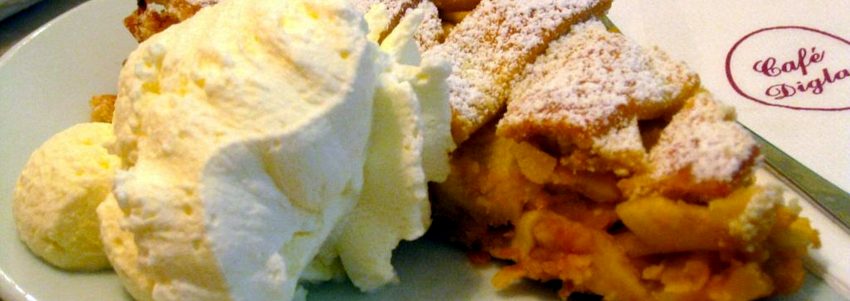Polish cuisine uses a fair variety of ingredients. It is rich in meat, especially pork, cabbage (for example in the dish bigos, a cabbage and meat stew), and spices, as well as different kinds of noodles and dumplings, the most notable of which are the pierogi.
A typical lunch (drugie śniadanie) is usually composed of at least three courses, starting with a soup, such as barszcz (beet) or żurek (sour rye meal mash), followed perhaps in a restaurant by an appetizer of salmon or herring (prepared in either cream, oil, or vinegar). Other popular appetizers are various meats, vegetables or fish in aspic (consommé). The main course may be the national dish, bigos (cabbage with pieces of meat, mostly pork) or kotlet schabowy (breaded pork cutlet). Meals often conclude with a dessert such as ice cream (lody), makowiec (poppy seed cake), or drożdżówka, a type of yeast cake. Other Polish specialties include chłodnik (a chilled beet or fruit soup for hot days), golonka (pork knuckles cooked with vegetables), kołduny (meat dumplings), zrazy (stuffed slices of beef), salceson and flaczki (tripe). Many dishes contain quark, (curd cheese).
If you want to eat cheaply, you should visit a bar mleczny (milk-bar). Bar mleczny is a typically Polish kind of a fast food restaurant. It was invented by the communist authorities of Poland in mid-1960s as a means to offer cheap meals to people working in companies that had no official canteen. Its name originates from the fact that until late 1980s the meals served there were mostly dairy-made and vegetarian (especially during the martial law period of the beginning of the 1980s, when meat was rationed). The milk-bars are usually subsidized by the state. Eating there is a unique experience – it is not uncommon that you will encounter people from various social classes – students, businessmen, university professors, elderly people, sometimes even homeless, all eating side-by-side in a 1970s-like environment. Presumably, it is the quality of food at absolutely unbeatable price (veggie main courses starting from around PLN 1.80) that attracts people.
Most Poles drink carbonated water. Non-carbonated bottled water is generally widely available, called “woda niegazowana”. Poland is known for its mineral waters. You can buy it in every shop, or try real mineral water with salts in “pavilions of water” (Pijalnia wód) in mountain resorts, where this water is produced. Note that drinking water with a meal is not a Polish tradition; you will almost always have to ask for water with your meal.


